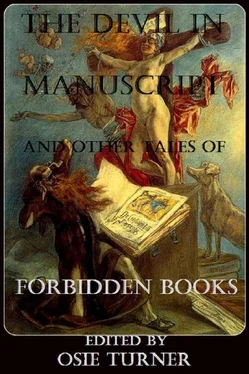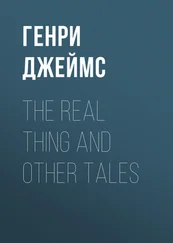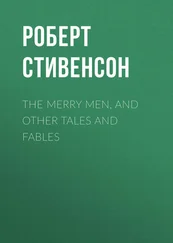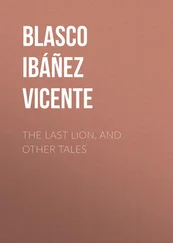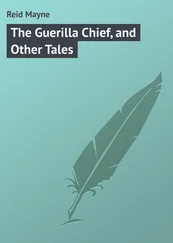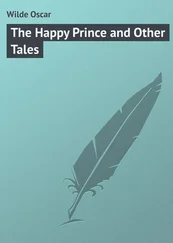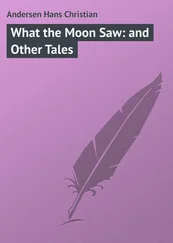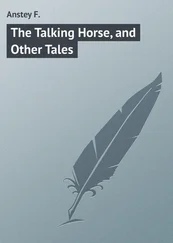One bright sunshiny afternoon in May, Emile Verone rested his hand for a moment on my shoulder. “Ah, monsieur,” he murmured, “you have talent and your heart is in it. There is life in that figure. You have caught it in a web of youth. Bravo!”
Leaving me jubilant, he passed on to Martin’s easel. Here he remained motionless for several moments, a frown of perplexity creasing his forehead, gazing at my roommate’s canvas in the manner of a man attempting to read a riddle.
“It is good—very good,” I heard him mutter. “And yet there is something lacking. It is not technique, it is feeling. It—Ah, I have guessed your little secret. Your heart is not in your task. Am I not right, Monsieur Martin?”
“Perfectly,” Martin answered, glancing up. “The model is not to my taste. That big, fat peasant with a face like a pumpkin does not inspire me.”
I knew of Verone’s hasty temper and was prepared for some manifestation of it. My roommate’s answer had been rather unceremonious. But the little Frenchman did not appear to be the least bit ruffled. His voice suddenly sank into a soothing murmur.
“Quite so,” he said mildly. “Every artist has his likes and his dislikes. But I have a plan. Absent yourself from the class for a month and choose a model for yourself. I will be anxiously awaiting the result. Does that satisfy you, monsieur?”
“Yes, indeed,” Martin answered with a strange glint in his grey eyes. “Nothing could suit me better.”
During the days that followed I saw very little of my roommate. He would leave the studio each morning, his portfolio under his arm, and not return again till the shadows of nightfall. And the few hours which he did spend in the apartment were spent in the privacy of his bedroom behind a locked door.
To tell the truth, I was relieved by his absence. The man was like a wet blanket thrown on the bonfire of goodfellowship which I was attempting to kindle in the studio. My guests were ill at ease in his company; and I, myself, felt a strange irritation at his every word and gesture. Now, as I look back on it, I think it was his atmosphere—that ever-present atmosphere of personal power—which we could not forgive him and which was as gall and wormwood to our own growing personalities.
One night, while champagne corks were popping merrily and laughter echoed through the studio, Martin’s bedroom door swung open and he stepped into our midst. His face was a deathly white and there were great, black hollows under his eyes. Instantly our laughter died away.
“Pour yourself a glass of wine,” I said with forced heartiness. “Have you come to join the merrymakers?”
“Just that,” Martin muttered.
“What have you been doing with yourself?” one of my guests asked. “You’re as pale as a ghost, monsieur.”
“I’ve been living with a corpse for a month,” Martin said slowly. “Would you like to see the results?”
He turned and re-entered his bedroom. A moment later he glided out again with a canvas under his arm. Placing it on the mantelpiece where we could all get a good view of it, he turned toward us and said in his deep, sonorous voice: “Allow me to introduce to you the results, gentlemen.”
Again there was silence, broken only by the deep breathing of those about me. All eyes were fixed on the painting. For many moments we stared at it, spellbound, motionless. It was the most sincere tribute I have seen paid to a living artist. There were two or three men present that night who afterward became international figures; but, at the moment, we knew in our souls that there was but one great master and that he now stood before us.
What was there in this painting to move us so? It is beyond my feeble pen to describe adequately the sensations of horror with which it filled me,—horror, overmastering and vaguely sinister; horror whose breath, was cold and damp as the tomb. One seemed to enter that picture bodily; to enter it and lose oneself in the shadows.
The painting represented the morgue in the dim twilight and more especially the body of a man lying on one of the marble slabs. The upturned face of the corpse was a mottled green shade; the protruding eyes were covered with a kind of fungus. And, to add to its horror, the bristling chin had dropped, disclosing two yellow fangs in a ghastly grin. On either side of this grim figure, partly revealed in the semi-gloom, were other slabs—each the bed of some new fantastic terror. Underneath this revolting conception was written in English these four words, “He Laughs at Death.”
We toasted Martin with brimming glasses, we shook him by the hand, we called him “master.” And he, for once, shook off his cloak of aloofness. Indeed, he put himself out to amuse us, telling us stories so intensely droll that we roared with laughter till all unconsciously our eyes returned to the painting. Then, as the laughter died in our throats, as the smiles faded from our faces, I thought I saw his lips curl in triumph.
Emile Verone went into ecstasies over Martin’s painting, calling it “a masterpiece of the terrible”; and soon it became noised abroad that my roommate was one of those rare freaks of nature, a genius. Art students now began to seek Martin out as a profitable acquaintance. But he refused to be drawn out of his cocoon of solitude and mystery. His personality, as always, enwrapped him like an impenetrable coat of mail. Would-be friends and admirers flinched when they met his cold grey eyes. Soon the first fine edge of their excitement wore off; they gave him up as impossible with a shrug of the shoulders and a muttered “Monsieur la Nuit.”
Time passed quickly. Almost before I realized it, a year rolled by. Martin had worked diligently; now the walls of our studio were covered with morbid masterpieces. As one might imagine, a highly strung person could not have entered this apartment for the first time without an inward tremor. Indeed, when the lights burned low, the room seemed to be a veritable charnel house.
One gloomy afternoon in autumn, these paintings were too much for my self-control. I was on the brink of a serious sickness at the time; and, as I sat alone before the dying fire, the flickering flames would reveal first one stiffening horror and then another till my overtaxed nerves could stand no more. Leaping to my feet with a muttered curse, I began turning those ghastly painted faces to the wall.
Suddenly I heard a low laugh behind me. Wheeling about, I encountered Martin who had entered as noiselessly as a cat. His sallow face still wore a crooked, evil smile which creased his right cheek like a scar.
“Emile Verone is right,” he said, moistening his lips with his tongue. “No one will buy my paintings because they are too good, too realistic in their horror. And if they were sold by any chance, they would be banished to the attic. Who would live with the dead but Martin?”
“Suddenly I felt sick—deathly sick. I had the strange sensation of having some precious secret drawn from me against my will—the same sensation, in fact, that I had experienced once before. Then followed dizziness and helplessness. Martin’s face appeared to loom above me, gigantic, monstrous. It grew larger and larger—a huge, terrifying mask behind which an evil passion lurked. Suppose he should remove this mask? Ah, it was slipping now, slipping
Everything grew black before my eyes. I felt a sharp blow on my forehead, then numbness and nothingness. I had fallen over in a swoon.
For the duration of that week I was delirious with typhoid fever. Strange dreams tormented me, and in these dreams Martin was always the central figure. I can still remember one of them distinctly.
I felt that I was lying naked on the scorching sand of a desert beneath the rays of a blistering sun. It was useless to struggle; I was held down by some invisible weight. And over my bare, burning body an army of tiny ants was crawling, causing me acute agony. But just as my sufferings were at their height, Martin’s lean face bent over me, his cold grey eyes peered curiously into mine, and he said earnestly: “How do you feel now?”
Читать дальше
